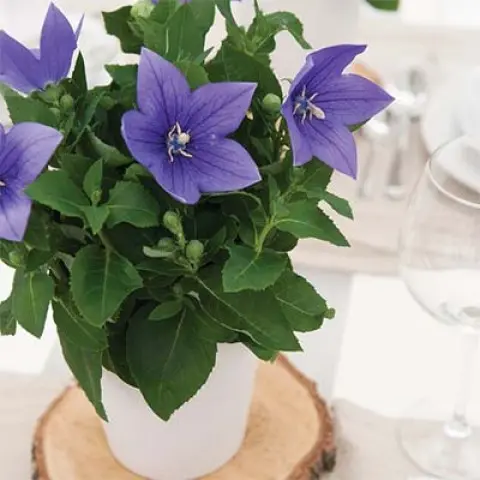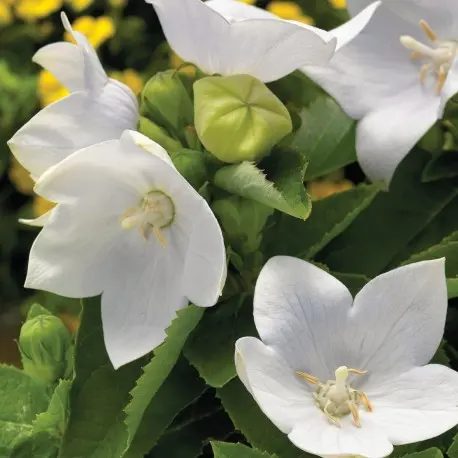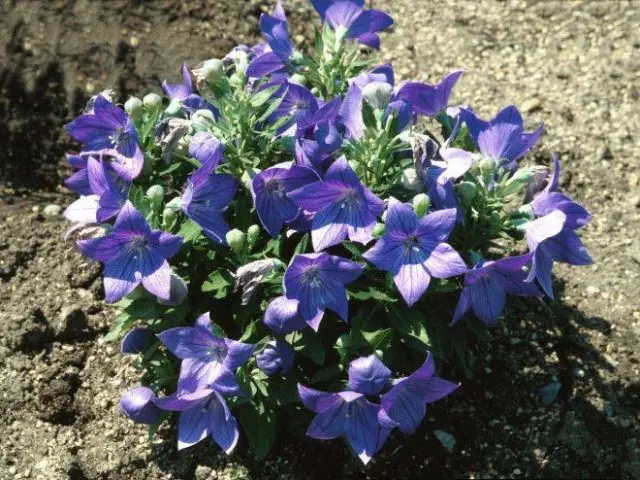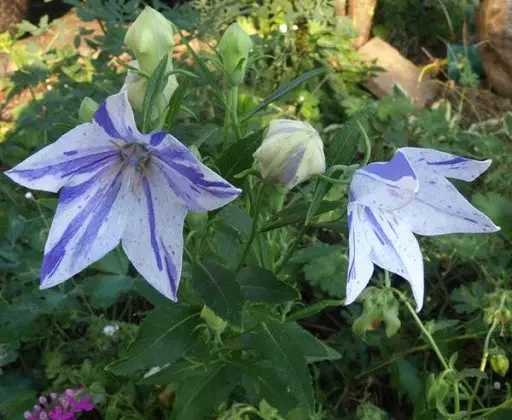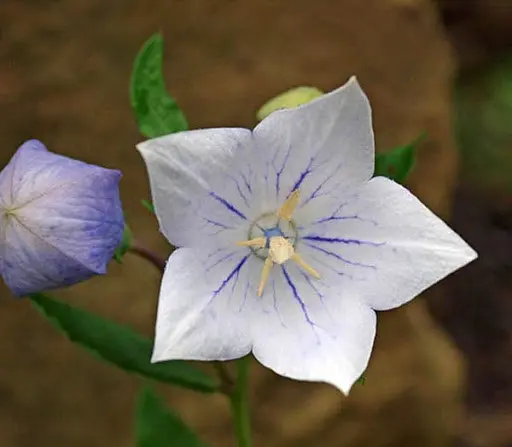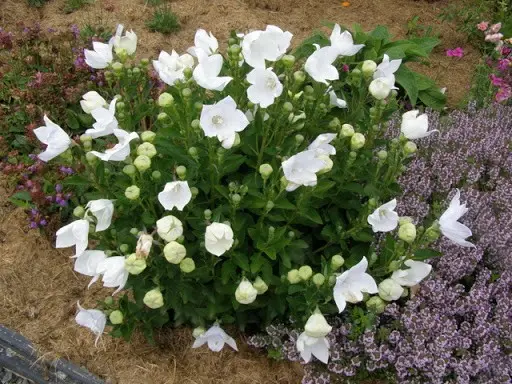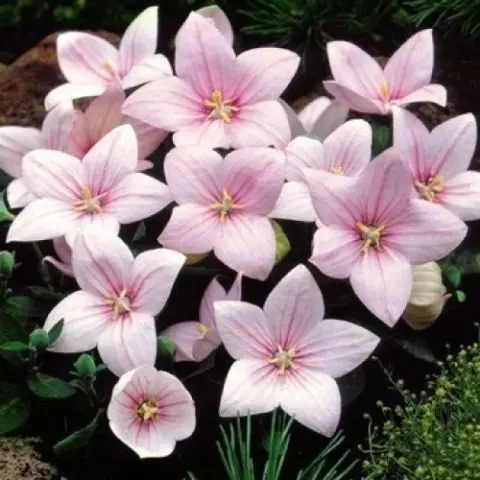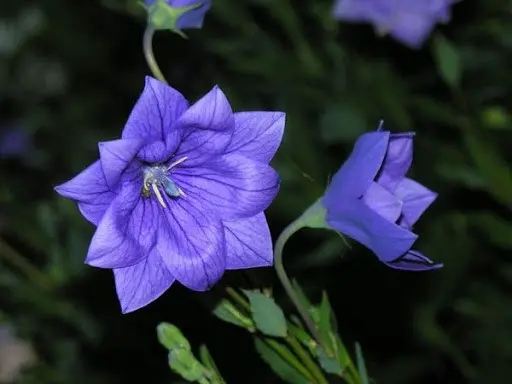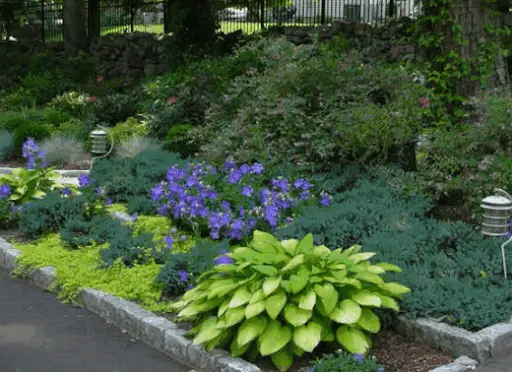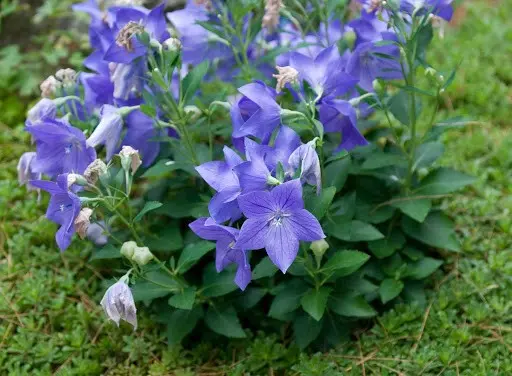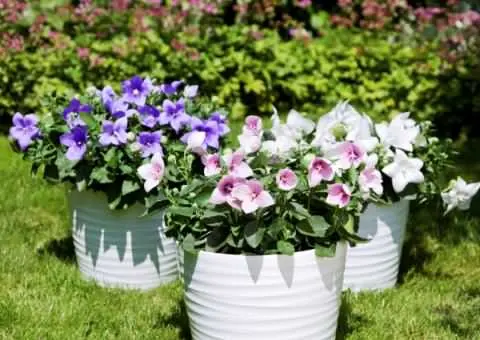Contents
Planting and caring for Platycodon is quite simple. This plant does not need to be fed. Young bushes should be watered often and plentifully, and adults – only during the drought period. The flower is characterized by good winter hardiness, so it is easy to grow it in almost any region of Our Country.
Description of the perennial bellflower Platycodon
Platycodon is a perennial plant of the Campanula family. For the characteristic shape of flowers, it is also called a bell (translated from Greek, “platycodon” means “wide bell”). The flowers are really large, up to 7-8 cm in diameter. They consist of five fused petals of various colors (depending on the variety):
- white;
- lilac;
- blue;
- pink;
- light and dark purple.
Flowering lasts 2 months, in the second half of summer (starting from mid-July). The leaves of the plant are rich green in color, coming out of the rosette. Flowers are collected in groups (inflorescences in the form of panicles) or are arranged singly. Shoots are densely leafy, straight, can reach a height of 20 to 80 cm (depending on the variety). The photo of Platycodon shows that the flowers of this perennial contrast well against the background of attractive greenery.
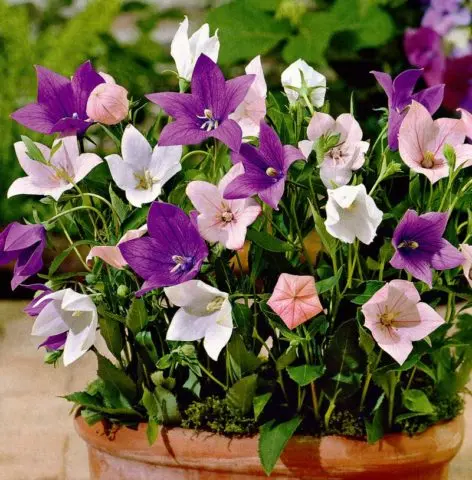
The height and color of the flowers depends on the particular variety of culture.
In nature, the plant is found in Eastern Siberia, in the Far East of Our Country and in neighboring countries (China, Korea, Japan). In gardens, platycodon is also successfully bred, since it has good winter hardiness (withstands frosts down to -40 ° C).
Platycodon variety
Varieties of platycodon are conditionally divided into 2 groups:
- Dwarf – they grow no higher than 25 cm.
- Tall – up to 50-70 cm.
The first group includes such varieties:
- Astra Blue (Astra Blue or blue): can be grown not only in the garden, but also in pots. The plant is compact, undersized, while the flowers are quite large, reaching 5-6 cm in diameter.

- Astra White: Platycodon cultivar with pure white flowers. Differs in dwarf sizes, its height does not exceed 20 cm. The flowers are large, wide open.

- Sentimental Blue (Sentimental Blue): A short, sprawling Platycodon shrub with rich light blue flowers. The crop is grown as an annual, because it blooms in the year of planting.

- Axminster Streaked (Axminster Streaked): one of the most beautiful platycodons. Contrasting blue strokes go on a pale blue background of flowers.

Popular large plant varieties:
- Fairy Snow (Fairy Snow) – the tallest species. It grows up to 80 cm. The flowers are white, have beautiful blue veins.

- White-flowered Fuji White (Fuji White): attracts attention with graceful milky bells. When planting a platycodon flower (pictured) in a flower bed, it should be noted that the bush is tall and moderately sprawling. Its height reaches 50-70 cm.

- Pink Fuji Pink (Fuji Pink) – related to white platycodon. Its flowers are pale pink, which is achieved due to the peculiar coloring of the veins in the petals.

- Blue Fuji Blue (Fuji Blue): one of the highest, can grow up to 70 cm. The flowers are large, up to 8 cm in diameter. Also belongs to the series of white and pink Fuji platycodons.

Some varieties of platycodon withstand frosts down to -40 ° C, others – down to -30 ° C or less. Therefore, in different regions it is recommended to grow different plants.
Platycodon in landscape design
Tall platycodon bushes are often used in single plantings. They decorate shady places in the garden, for example, next to the house, in the trunk circle of a powerful tree, not far from tall shrubs. The plant can also be combined with the usual garden flowers:
- phlox;
- peonies;
- irises;
- daylilies
Low-growing varieties are used to frame paths, in mixborders, alpine slides. Platycodons look great on the coast, next to a bench, gazebo and other recreation areas.
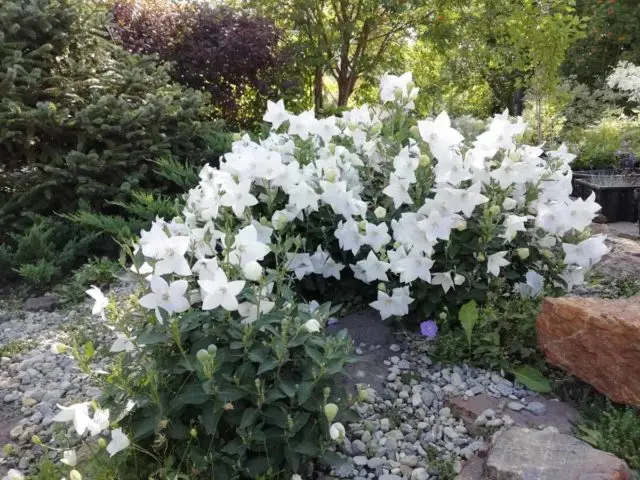
The main condition is not to forget about creating penumbra so that the bells feel as comfortable as possible
Interesting options for using platycodon in landscape design (pictured) will help when decorating a garden plot:
- Flowering culture looks good in composition with hostas and other ornamental plants.

- You can decorate the lawn with a single planting of Platycodon.

- Low-growing varieties can be used to create a border.

- Platycodon flowers grown in barrels can be transferred to any corner of the garden.

It grows slowly and does not take up too much space. Therefore, any ornamental plants can become a neighbor of such a flower (subject to the correct combination in shape, color and size).
Features of reproduction of platycodon
Platycodon is quite difficult to propagate from cuttings, as many of them do not take root. Although, if desired, you can still get several child bushes. Cuttings are cut at the beginning of summer (shoots with two internodes are taken and grown in wet sand in greenhouse conditions, and then transferred to open ground).
The division of platycodon rhizomes is also not suitable, since in this case the bush is severely injured. Delenki often do not take root, and the mother plant may also suffer because of this procedure.
Therefore, the only effective (and not very laborious) way to propagate platycodon is growing from seeds. To obtain seedlings, grains are sown in early March. You can purchase a universal soil for flowering plants or make a mixture of peat, humus and sand in equal amounts.
The instructions for breeding Platycodon are simple:
- Seeds are buried by 3-5 mm, sprinkled with earth a little.
- Abundantly watered.
- The container is covered with a glass lid and cleaned in a warm place.
- First grown at a temperature of 23-25 ° C. As soon as shoots appear, gradually reduce to 16 ° C.
- Then they grow under normal conditions and transfer platycodon to open ground in early May.
The first shoots appear quite late – at the end of April or in May.
Planting and caring for platycodon in the open field
Any gardener can handle planting and caring for platycodon, since the bell is undemanding to growing conditions. It needs moderate watering and infrequent top dressing. And especially carefully you need to take care of young bushes, while adult plants do not require special care.
When to plant platycodon
Young bell bushes are thermophilic, so they can be planted in open ground only when the frosts definitely do not return. In most regions of Our Country in the second half of June, in the south – at the beginning of the month.
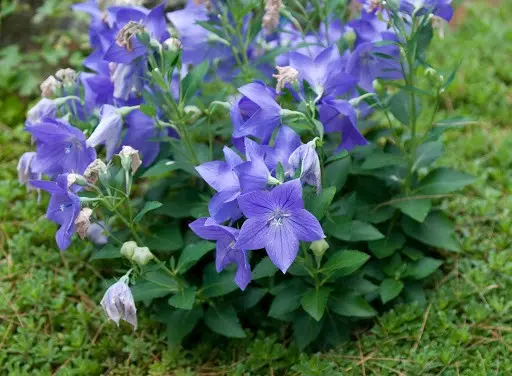
In the Urals and Siberia, it is better to plant platycodon in early June, and if the summer turned out to be cold – 1-2 weeks later
Site selection and soil preparation
The culture prefers light, fertile soil (preferably loam) with a small amount of sand. The reaction must be neutral. The landing site must be:
- protected from direct sunlight (you can choose partial shade from garden trees or tall shrubs);
- protected from the wind;
- not waterlogged (it is undesirable to plant in a lowland).
The soil is pre-cleaned and dug up, trying to break all large lumps. If the soil is not very fertile, complex mineral fertilizer should be applied (50-60 g per 1 m2).
Planting platycodon in open ground
The bell landing algorithm is as follows:
- They dig several holes at a distance of 15-20 cm. A more rare planting is also allowed, depending on the design.
- Lay a small drainage layer (2-3 cm) of small stones, broken bricks.
- Seedlings are placed and sprinkled with earth so that the root neck comes as close to the surface as possible (at the same time it should not be visible).
- The soil is lightly tamped, watered abundantly with settled water.
- Mulch with humus, peat, straw or other improvised materials.
The roots of platycodon are very fragile, so proceed with extreme caution.
Watering and fertilizing schedule
Caring for platycodon in the open field is not very difficult. During the first two weeks after planting, bluebells are watered almost every day with a small amount of water. Then the liquid is added only as needed, preventing the soil from completely drying out. Adult bushes that are more than 3-4 years old are watered only during a drought.
It is not necessary to feed the plants during the first season (if the site has been previously fertilized).
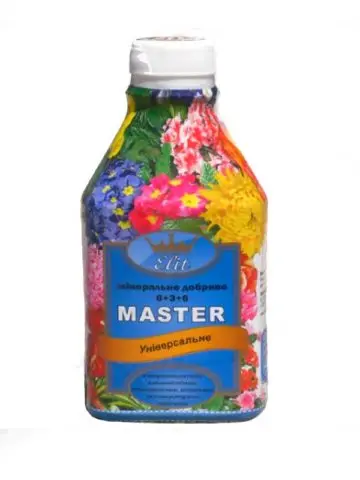
Complex fertilizer can be applied in April or May
If there is humus in the mulch, you do not need to additionally feed the platycodon.
Loosening, weeding, mulching
Platycodon, like many other flowers, loves light soil, which receives oxygen. Therefore, you need to loosen regularly, for example, once every 7-10 days. It is especially important to do this before watering, so that water quickly reaches the roots of the bluebell.
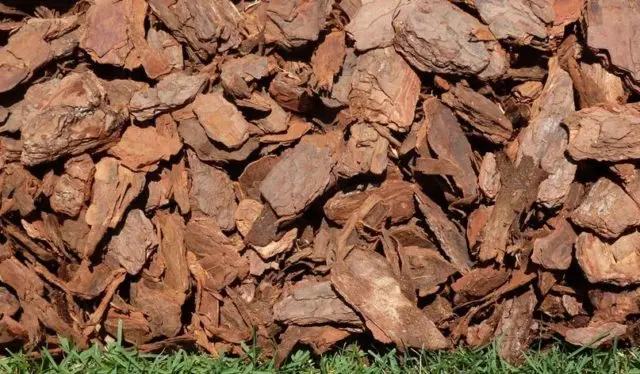
So that there are fewer weeds, and the soil retains moisture longer, it is mulched with peat, humus, sawdust, hay
Pinching, garter
Platycodon sprouts for a long time (when grown by seeds), but then quickly picks up growth and goes up. To prevent the shoots from stretching out too much, they need to be pinched regularly when they reach the desired height. Growth inhibitors can also be used.
It is not necessary to tie the bells, because the shoots are straight, and the flowers are not heavy, the plant keeps its shape well. But if the moment of active growth is missed (there was no pinching), and the shoot is very long, you need to put a wooden peg next to it and tie the bush with a rope.
Preparation for wintering
Many varieties of platycodon have good winter hardiness. But in any case, the plants need to be prepared for the cold period. After flowering, dried seed pods are collected (if they plan to grow seedlings) and all flower stalks are cut off.
At the end of September, the stem of the plant is cut off completely, leaving a 2-3 cm stump. Cover with mulch – it can be humus, dry foliage, peat. The layer should be high enough, while additional shelter is not needed. The next year, the mulch should be removed at the end of March so that the platycodon does not have time to overheat.
Diseases and pests
Platycodon has a very good immunity to diseases and pests. Only occasionally can a plant suffer from gray rot. Usually this disease develops due to excessive watering. Gray or yellowish-brown spots appear on the leaves. In this case it is necessary:
- Remove any damaged platycodon leaves and discard or burn.
- Loosen the soil thoroughly and do not water soon.
- Treat the plant with a fungicide – you can use Bordeaux mixture and other preparations (“Fundazol”, “Skor”, “Ordan”, “Maxim”).
As for pests, they practically do not occur on the surface of the leaves and stem of Platycodon. Insects can parasitize on the roots of the bell. It is difficult to determine this, so it is better to try to regularly loosen the soil and transplant the bushes to a new place in 5-7 years.
Conclusion
Planting and caring for platycodon do not cause difficulties, so any gardener can handle them. Flowers look spectacular, especially when several plants of the same height are planted tightly. The culture goes well with different plants, which allows you to create interesting compositions that enliven the garden.










